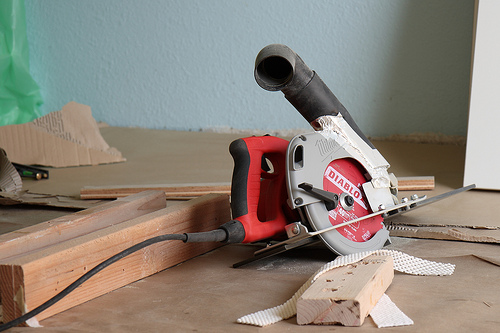When it comes to power tools, few can match the sheer utility of a circular saw. The blade whirs, cutting through wood with a precision that is both satisfying and effective. However, the efficiency of a circular saw doesn’t solely hinge on its cutting edge; it profoundly depends on consistent maintenance practices. Surprisingly, many users overlook this critical aspect, only to face diminished performance and premature wear. So, what is the most important maintenance task for a circular saw? Spoiler alert—it’s not merely about sharpening the blade.
The lifeblood of a circular saw is its blade, yet the most fundamental maintenance involves the tool’s entire system, particularly the internal components. A thorough cleaning of the saw after each use is paramount. Dust and debris can accumulate, potentially infiltrating the gears and motor. Neglecting this task invites a range of issues, from overheating to mechanical failure. Thus, establishing a regimented cleaning routine is essential for the longevity and performance of the saw.
Before diving deeper into maintenance intricacies, let’s illuminate a simple yet often misunderstood concept: lubrication. The moving parts of your circular saw require lubrication to operate seamlessly. Proper lubrication reduces friction, which is a silent enemy to any power tool. Lubrication points can usually be found in the user manual; a few drops of the right oil at these junctures can extend the life of your saw considerably.
Now, turning our attention to the blade itself, sharpening should be viewed as part of a holistic maintenance approach, rather than the single focal point of attention. A dull blade not only undercuts efficiency but also poses safety hazards. When considering when to sharpen, pay attention to the quality of the cuts. If you’re exerting more force than usual or notice splintering, it’s time to assess the blade’s condition. Interestingly, the type of material you frequently cut can dictate sharpening frequency. Harder materials tend to dull blades at a faster rate. Manufacturers often provide guidelines on optimal sharpening intervals based on usage.
Beyond the obvious performance benefits, maintaining your circular saw blade also contributes to more accurate cuts. When the blade is sharp, it can slice through materials effortlessly, allowing for precise results. Conversely, a dull blade produces jagged cuts that can mar the aesthetics of a project, leading to additional finishing work that consumes time and resources.
Moreover, regular inspection of the blade is crucial. A bent, chipped, or cracked blade can result in catastrophic failure during operation, posing serious safety risks. When checking the blade, inspect the teeth closely for wear and damage. A proactive approach in identifying these issues can save you from costly accidents down the road.
In addition to blade maintenance, don’t forget about the base plate of your circular saw. This often-neglected component plays a vital role in ensuring stable, level cuts. Over time, the base plate can become scratched or warped, impacting the precision of your work. Fortunately, maintaining the base plate is quite straightforward. Regularly inspect the plate for flatness; use a straightedge for verification. If you observe any warping, most manufacturers provide replacement options, which can be installed with basic hand tools.
One of the more tedious—but necessary—maintenance tasks involves inspecting the power cord and trigger mechanisms. A damaged cord can lead to electrical failures or, worse, electrocution. Look for fraying or cuts along the cord’s length, especially near connection points. If any damage is detected, refrain from using the saw until the cord is replaced. Additionally, the trigger mechanism should be assessed for responsiveness; lagging triggers can signify internal issues that may progressively worsen if left unaddressed.
Furthermore, it’s prudent to explore the benefits of using the correct accessories. Choosing the right blade for your specific tasks not only maximizes efficiency but also minimizes wear on the saw itself. For instance, using a blade designed for thick lumber on lightweight materials can lead to unnecessary strain on the saw, while a fine-toothed blade on thicker wood can yield subpar results. Always align the blade specifics with the nature of your work.
As we transition from the mechanical to the operational side of maintenance, consider the environment in which the circular saw operates. Moisture and extreme temperatures can adversely affect performance and longevity. Aim to house your tools in a climate-controlled area when not in use, providing a protective buffer against corrosive elements. Dedicating a designated storage solution, ideally with padding, can prevent physical damage during stowage.
In summary, while the blade requires attention, comprehensive maintenance for a circular saw transcends mere sharpening. Effective upkeep involves a calculated approach that includes cleaning, lubrication, blade inspection, base plate assessment, power cord scrutiny, and thoughtful usage of accessories. Investing time in these activities not only optimizes performance but also safeguards against the unpredictable challenges that come from neglect. In doing so, you will ensure that your circular saw serves you well, cutting through tasks with relentless efficiency for years to come. The circular saw is an extension of your craft—treat it with the care it deserves, and it will reward you with precision and ease.
